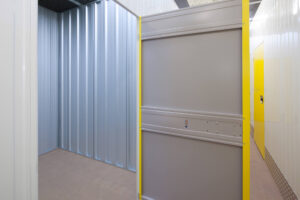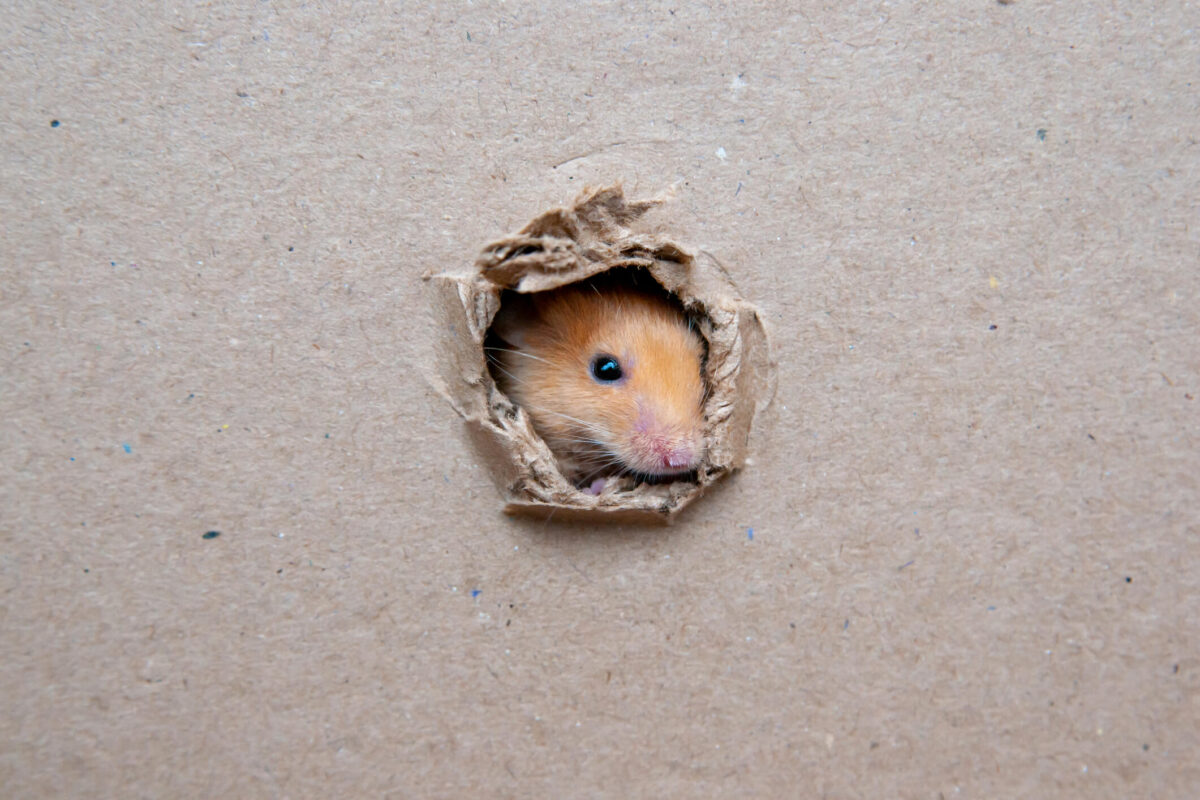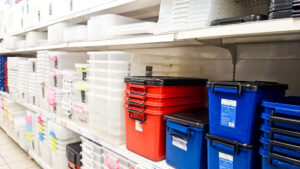When using a storage unit for storing your valuables, the last thing you want to deal with is pests. Rodents, bugs, and other critters can quickly wreak havoc on your stored items, causing significant damage. Whether you’re storing furniture, mattresses, food, or other belongings, keeping your unit clean, organized, and free of pests is essential. Maintaining proper hygiene in your unit is crucial for preventing infestations. Regular maintenance and careful unit monitoring for potential issues can also make a big difference.
At McDowell Mountain Community Storage, we understand how important it is to protect your possessions, which is why we are dedicated to offering our customers secure and well-maintained storage facilities. It’s essential to store your mattress, furniture, and other things in proper containers with lids to prevent pests from getting in, especially when storing materials that could attract insects or rodents. Proper monitoring of your unit’s condition is essential, as mice, rats, and other critters can find their way in if the ground is not sealed correctly or there are small openings. This can lead to a nasty smell and damage to your property.
This blog post will provide tips for preventing rodents and other pests from invading your storage unit. By following these guidelines, you can ensure that your belongings are protected from potential damage caused by pests and have peace of mind knowing that your storage unit is safe from pests like mice, rats, and insects that thrive on food residue or improper storage.
Choose the Right Storage Unit and Facility
The first step in pest prevention is selecting the right storage facility. When you’re looking for a place to store your belongings, it’s essential to choose a storage unit that’s clean, secure, and free from pests. Look for a storage company like McDowell Mountain Community Storage that prioritizes cleanliness and pest control. We understand the importance of keeping pests like mice, rats, and moths out of your unit. Our team works hard to protect people and their belongings from pests.
Ensure your chosen facility has a solid reputation for maintaining its storage units. Monitor reviews and inquire about the company’s pest control practices. At McDowell Mountain Community Storage, we take pride in taking proactive measures to keep our storage units free from pests and rodents. Our storage units are equipped with robust pest control and prevention strategies to ensure that pests don’t invade your space. We do everything we can to maintain a clean environment, providing a safe and secure place for your items.
Another critical factor is the structure of the storage unit itself. Units with airtight doors and no cracks or holes in the walls provide better protection against mice, rats, and other pests. Humans and even moths can unknowingly bring pests into a facility, so taking every precaution is essential. Be sure to ask the facility if they regularly inspect their units for any signs of damage, as even the slightest opening can allow pests to enter. Many of the issues with pests come from unnoticed holes or damage to the walls that allow mice and rats to sneak in.
Keep Food Out of Your Storage Unit
One of the most common reasons for pest infestations in storage units is food. Rodents like mice and rats are particularly attracted to food, which can cause problems storing perishable or non-perishable food items. Even small crumbs or food residue can draw pests into your unit. Renters should be mindful of this, as food residue can quickly become a shelter and attract pests into areas typically used for storage.
Never only store food in your storage unit if it’s in tightly sealed containers to avoid this. Even if you’re storing canned goods or dry food items, keeping them in secure, airtight storage containers is essential. The best option is to use plastic or metal containers not easily chewed through by rodents. You can also use bug spray or peppermint oil to help deter pests, as these scents are known to repel rodents and other bugs. Peppermint oil is especially effective at keeping mice at bay, preventing them from creating nests in the area.
Clean your unit thoroughly if you’ve accidentally stored food before adding any new items. Move everything out and wipe down the floor and walls of the unit to remove any crumbs or food residue that could attract pests. In addition, be sure to check for any nests that may have formed and clear them out. If you have any questions or concerns about pest prevention, don’t hesitate to ask our McDowell Mountain Community Storage staff. We aim to ensure your storage unit remains pest-free, safe, and secure for all your belongings.
Remember, a clean unit is the key to protecting your totes, furniture, and other valuable items from pests like mice, rats, and insects. Regularly inspect your storage areas and ensure your storage containers are adequately sealed. This simple habit will significantly reduce the risks associated with pests and make your storage unit safer for your items.
Store Items Properly
Proper storage methods are essential to keeping pests away. Storage bins are an excellent way to organize items while protecting them from the elements and pests. For better protection, choose plastic bins instead of cardboard boxes. Cardboard boxes are often used in self-storage but can attract pests and are less durable than plastic or metal containers. Pests can easily chew through cardboard, making it easier for them to access your stored belongings. Mice and other rodents are particularly fond of nesting in cardboard, so opting for more secure options is essential.
When organizing your storage unit, elevate boxes and containers off the floor. Using pallets or other forms of shelving can help keep your items out of reach of pests. It also allows for better air circulation, which can help prevent dust buildup, mold growth, and infestation. Elevating your items reduces the risk of mouse and insect activity near the ground, where they are more likely to find food and shelter.
Additionally, ensure that your storage unit is kept neat and organized. Cluttered units provide plenty of hiding spots for pests like mice, rats, and bugs. Keeping your unit clean and tidy will reduce the likelihood of a pest problem. Placing mouse traps and using scent deterrents like peppermint oil or other repellents will protect your unit from rodents and insects. Organizing your self-storage unit properly and maintaining a clutter-free environment ensures that pests don’t have any place to hide, helping to keep your belongings safe from potential damage.

Seal All Entry Points
Pests are clever and can sneak into storage units through even the most minor cracks or openings. It’s essential to inspect your storage space regularly for any holes, gaps, or cracks that rodents or bugs could use to enter. If you notice any potential entry points, be sure to seal them right away. Tenants should habitually check their self-storage units to ensure these tiny openings are correctly sealed to prevent pest problems.
For self-storage units, check the condition of the doors, windows, and walls to ensure no gaps have formed over time. McDowell Mountain Community Storage ensures that all our storage units are regularly inspected and well-maintained. However, performing your checks and reporting any damage you see is still essential. Even small holes or cracks can give pests access to sneak in and create a nest.
Some ways to seal entry points include weatherstripping, caulking, or applying pest control barriers around the edges of doors and windows. In addition, pest deterrents such as mothballs, essential oils (like peppermint oil), or commercial repellents can be placed near entry points to keep pests at bay. It’s also a good idea to store items like clothing, appliances, and boxes in airtight containers, preventing pests from getting to your belongings. Following this rule will help ensure that your stored items remain safe and free from damage. Regular inspections and sealing potential entry points are key to maintaining a pest-free storage environment.
Use Pest Deterrents
In addition to proper sealing, various natural and commercial methods keep pests away from your unit. Pest control products such as traps, bait, and poison can help reduce the number of rodents in your unit. You can also use non-toxic methods, like peppermint oil, a natural repellent for mice and other pests. Soaking cotton balls in peppermint oil and placing them throughout your self-storage unit can help deter pests from entering.
Rodent droppings can indicate a severe infestation, so checking your unit regularly for any signs of pests is essential. If you notice droppings or damage to your items, set traps or contact your storage company for assistance immediately. McDowell Mountain Community Storage is committed to providing a pest-free environment for our customers, but we also encourage you to protect your belongings. Whether you’re storing furniture, clothing, or appliances, it’s essential to store your items in a way that deters pests from making something their home in your unit. Using secure containers and regularly inspecting your unit is an excellent protection against pests.
Regularly Inspect Your Storage Unit
It’s important to check your self-storage unit regularly to ensure that it remains free of pests. Inspect the walls, floor, and any items that you’ve stored for signs of pest damage. Look for droppings, chewed-up boxes, or signs of nesting, such as shredded fabric or cloth. Moisture can also attract pests, so it’s crucial to monitor the location of your unit and ensure it’s not prone to dampness or leaks, which could encourage mold and pests to thrive.
If you find any signs of pests, address the issue immediately. Remove any damaged or contaminated items, clean your unit thoroughly, and set up traps or other pest deterrents to eliminate the problem. An excellent method to repel pests is lavender sachets or oils, known to deter bugs. At McDowell Mountain Community Storage, we provide ongoing inspections and take proactive measures to maintain a pest-free environment. Still, your diligence is essential for keeping pests out of your unit. Consider your insurance policy and ensure you’re covered for any damage caused by pests. This proactive approach will help safeguard your possessions, whether you’re storing personal items or more valuable ones like furniture or appliances.
Consider Using Pest Control Services
If your storage unit is still attracting pests despite your best efforts, consider contacting a professional pest control company. Many storage companies partner with local pest control professionals to ensure their facilities are thoroughly inspected and regularly treated for rodent damage and other pest problems. This experience can help address pest problems promptly and effectively, especially if you’re storing high-value items like furniture, appliances, or sensitive wrap materials.
Professional pest control services can comprehensively solve pest issues in your self-storage units. These services typically include regular inspections, applying repellents, and installing pest barriers to keep pests out. Professional pest control can offer peace of mind, whether you’re storing boxes filled with personal belongings or seasonal items from your apartment. At McDowell Mountain Community Storage, we take pest prevention seriously and are happy to recommend trusted pest control companies to help protect your items. With the proper management and preventive measures, you can minimize the weight of pest-related concerns at our site.
Organize Your Space to Reduce Clutter
One of the best ways to reduce the likelihood of a pest infestation is to keep your storage unit organized. Avoid stacking boxes or containers too high or too closely together. Leave enough space between your items to allow air circulation and make it harder for pests to find hiding spots. Maintaining proper organization also reduces the possibility of rodent infestations, as clutter provides ample shelter for pests. It’s also a good idea to keep your storage unit clean by wiping down surfaces and inspecting your items regularly.
Consider labeling your storage containers and keeping a list of your stored items. This will make it easier to find what you need and identify if pests have disturbed anything. Staying proactive with these practices is an effective solution to deter pests and protect your belongings.
Consider Insurance for Extra Protection
Even with all the proper precautions in place, accidents can happen. Rodent damage, infestation, and other pest problems can still occur, even in well-maintained storage units. Many storage companies, including self-storage facilities, offer insurance policies to cover the cost of damage caused by pests or other unforeseen circumstances. When renting your storage unit, it’s essential to ask about these insurance options to ensure your belongings are covered. For additional peace of mind, consider using durable materials like plastic bins and airtight containers to store your items securely.
At McDowell Mountain Community Storage, we provide tailored insurance policies to protect against unforeseen issues, including pest-related damages. While our self-storage facility is equipped with advanced pest control measures to minimize risks, having insurance coverage is a smart way to safeguard your belongings. Contact us today for a quote and learn more about the solutions we offer to keep your property safe.
Contact Us Today!
At McDowell Mountain Community Storage, we’re committed to providing a clean, secure, and pest-free environment for all your storage needs. With our robust pest control measures and Storage tips on keeping your unit safe from rodents and pests, you can trust that your belongings are in good hands. Contact us today to learn more about our storage units and how we can help you store your items safely and securely!
Frequently Asked Questions
Find answers to common questions about keeping pests out of your storage unit.
What type of storage unit is best for preventing pests?
Choose a storage unit with airtight doors and no visible cracks or holes in walls. Opt for facilities with strong pest control measures and regular inspections.
Can I store food in a storage unit without attracting pests?
Avoid storing food in a storage unit. Even canned goods or dry food should be in airtight containers to prevent attracting rodents and insects.
How do I check my storage unit for pest infestations?
Inspect your unit regularly for signs like rodent droppings, chewed materials, or nests. Check for any gaps, cracks, or moisture that might encourage pests.
What materials are best for storing items to prevent pests?
Use plastic or metal storage containers with airtight lids instead of cardboard boxes, as cardboard can attract pests like rodents and insects.
How can peppermint oil help with pest prevention?
Peppermint oil is a natural repellent for mice and other pests. To deter infestations, place cotton balls soaked in peppermint oil around your storage unit.
Why is it important to elevate stored items off the floor?
Elevating items using pallets or shelves prevents pests from quickly accessing them and improves air circulation, reducing the risks of mold and infestation.
What should I do if I notice pests in my storage unit?
Remove any affected items, clean the unit thoroughly, seal all entry points, and set traps or use repellents. If needed, consult your storage facility for assistance.
Can pest control services help maintain a pest-free storage unit?
Professional pest control services can provide inspections, repellents, and barriers to address infestations and prevent further issues.
Is insurance necessary for storage units?
Insurance can protect your belongings from unforeseen issues, such as pest damage, even in facilities with robust pest control measures.
How can I organize my storage unit to discourage pests?
Space out containers, label items, and maintain cleanliness to keep the unit clutter-free and eliminate hiding spots for rodents and insects.



